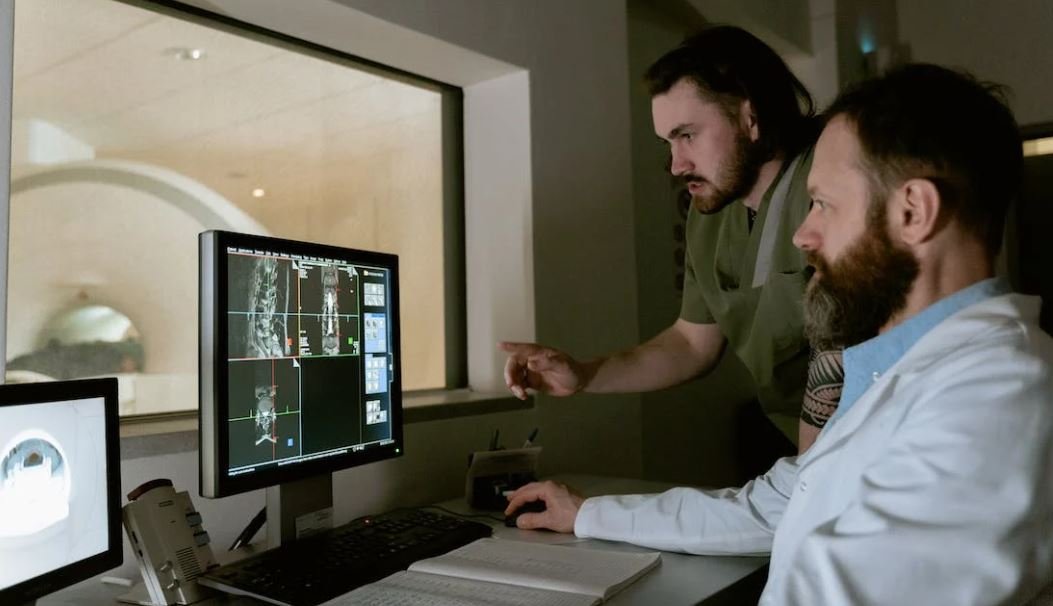Can Artificial Intelligence Be Dangerous?
Artificial Intelligence (AI) has rapidly advanced in recent years, revolutionizing various industries and enhancing our daily lives. However, as AI becomes more sophisticated, concerns about its potential dangers have arisen. It is important to critically analyze the risks associated with AI to ensure its development benefits humanity without posing significant threats.
Key Takeaways:
- Artificial Intelligence has the potential for both positive and negative impacts.
- AI’s dangers include job displacement, privacy breaches, and bias.
- Proper regulations, ongoing research, and ethical considerations are crucial to mitigate the risks.
One of the major concerns surrounding AI is the impact it may have on employment. As AI systems continue to automate tasks traditionally performed by humans, many jobs are at risk of being replaced. This disruption can lead to unemployment and economic inequality. However, AI also creates new job opportunities, requiring individuals to acquire different skills to thrive in the evolving job market. Job displacement is a significant challenge presented by AI.
Another potential danger of AI lies in privacy breaches. As AI algorithms collect and analyze vast amounts of personal data, there is a risk of privacy violations. The unauthorized use of this data can lead to identity theft, targeted advertising, or even social engineering attacks. It is essential to ensure that robust security measures are in place to safeguard personal information. Protecting individuals’ privacy should be a top priority in AI development.
| Dangers | Mitigation Strategies |
|---|---|
| Bias and discrimination | Regularly audit AI systems, prioritize diverse AI teams, and improve transparency. |
| Job displacement | Invest in retraining and upskilling programs, prioritize human-AI collaboration. |
| Privacy breaches | Enforce strict data protection regulations, utilize secure encryption techniques. |
Bias is another critical issue associated with AI. If training data used to develop AI algorithms contains implicit biases, those biases can be perpetuated or even amplified in the system’s decision-making process. This can lead to discriminatory outcomes in areas such as hiring, lending, or criminal justice. Regularly auditing AI systems, prioritizing diverse AI teams, and improving transparency are crucial steps to mitigate bias in AI systems. Addressing bias is essential to ensure fair and unbiased AI decision-making.
The Importance of Regulations and Ethical Considerations
Given the potential risks of AI, establishing proper regulations is vital. Governments, industry leaders, and experts must collaborate to develop comprehensive frameworks that guide the responsible development and deployment of AI technologies. These regulations should encompass privacy protection, bias mitigation, and accountability measures for AI system failures. Regulations are key to minimizing AI’s potential dangers.
| Region | Market Size (in billions USD) |
|---|---|
| North America | 114.15 |
| Asia Pacific | 97.36 |
| Europe | 73.27 |
Ethical considerations must also be at the forefront of AI development. AI systems should be designed with values such as transparency, fairness, and accountability in mind. Developers should strive to create AI algorithms that are explainable, enabling users to understand the decision-making process behind AI-generated outcomes. Additionally, continuous research and development in AI ethics should be conducted to address emerging challenges and ensure AI aligns with societal values. Ethical considerations are crucial to shaping the responsible use of AI.
- Invest in AI research and development to enhance safety measures and responsible AI practices.
- Promote interdisciplinary collaboration to address AI’s potential dangers from multiple perspectives.
- Encourage public awareness and education about AI risks and benefits.
In conclusion, while AI technology holds immense potential for positive impact, it is important to acknowledge and mitigate its potential dangers. Proper regulations, ongoing research, and ethical considerations are crucial to maximize the benefits of AI while minimizing risks. By addressing job displacement, privacy breaches, bias, and other concerns, society can harness AI’s power as a force for good. Ensuring the responsible development and deployment of AI is fundamental to its safe and beneficial integration into our lives.

Common Misconceptions
Misconception 1: Artificial Intelligence (AI) is all about robots that can take over the world
Many people associate AI with the idea of robots becoming self-aware and overthrowing humanity. However, this is not an accurate representation of AI. AI refers to the development of computer systems that can perform tasks that would typically require human intelligence. It does not necessarily involve physical robots.
- AI is used in various industries such as healthcare, finance, and entertainment
- AI can assist in improving productivity and efficiency
- AI has applications in data analysis, speech recognition, and image processing
Misconception 2: AI will replace all human jobs
There is a common fear that AI will render human workers obsolete. While AI does have the potential to automate certain jobs, it is unlikely to replace all human workers entirely. AI is better suited for performing repetitive and tedious tasks, while humans excel in decision-making, creativity, and complex problem-solving.
- AI can assist humans in handling mundane tasks, freeing up their time for more meaningful work
- Humans possess emotional intelligence, which is crucial in jobs that require empathy and social interaction
- New job opportunities will arise as AI technologies continue to develop, requiring human expertise in their implementation and management
Misconception 3: AI will inevitably become malevolent and pose a danger to humanity
Some people worry that AI will become inherently evil or prone to malicious behavior. While AI can potentially be misused, it does not have inherent intentions or desires. The ethical implications and the way AI is developed and utilized by humans play a significant role in determining its impact.
- AI can be programmed with ethical guidelines and regulations
- The responsibility lies with humans to ensure AI is developed and deployed in a safe and responsible manner
- Efforts are being made to establish ethical frameworks and guidelines for AI development and use
Misconception 4: AI is only present in high-tech industries
Another common misconception is that AI is limited to high-tech industries such as software development or robotics. In reality, AI has a broad range of applications and is increasingly being integrated into various sectors, including healthcare, finance, agriculture, transportation, and even everyday consumer products.
- AI is used in medical diagnosis and treatment planning
- AI algorithms can optimize financial portfolios and predict market behavior
- AI is utilized in autonomous vehicles and traffic management systems
Misconception 5: AI will outsmart humans and become uncontrollable
While AI can be programmed to learn and improve from the data it is exposed to, it is incorrect to assume that it will exceed human intelligence and become uncontrollable. AI systems are designed to operate within predefined boundaries set by human developers and can only perform tasks they have been programmed for.
- AI systems have limitations and are not capable of general intelligence
- Humans can continuously monitor and update AI systems to ensure they remain aligned with their intended purpose
- AI’s capabilities are dependent on the quality and scope of the data it is trained on

Artificial Intelligence: A Brief Overview
Before diving into the potential dangers of artificial intelligence (AI), it is essential to understand what AI encompasses. AI refers to the simulation of human intelligence in machines that are programmed to learn, reason, and problem-solve. This article explores 10 different aspects of AI that highlight both its potential benefits and the risks it poses.
The Growth of AI in Different Industries
This table illustrates the increasing adoption of AI in various sectors, showcasing its extensive presence and its impact on industries such as healthcare, finance, and transportation.
| Industry | Adoption Rate of AI (%) |
|---|---|
| Healthcare | 76% |
| Finance | 68% |
| Transportation | 56% |
| Retail | 42% |
AI’s Impact on Job Market
The integration of AI technologies in the workforce is a subject of concern for many. This table presents the projected job loss due to automation and highlights the need for upskilling to adapt to the changing job landscape.
| Job Sector | Projected Job Loss due to Automation (%) |
|---|---|
| Manufacturing | 50% |
| Transportation | 38% |
| Retail | 22% |
| Customer Service | 15% |
Applications of AI in Medicine
AI has made remarkable advancements in the medical field. This table highlights various applications of AI in medicine, underscoring its potential to improve diagnostics, treatment, and patient outcomes.
| Application | Advantages of AI Implementation |
|---|---|
| Medical Imaging Analysis | Improved accuracy in detecting abnormalities |
| Drug Discovery | Faster development of new drugs |
| Patient Risk Assessment | Early identification of high-risk patients |
| Surgical Training | Enhanced surgical skills through simulations |
Ethical Considerations in AI Development
As AI systems become more autonomous, ethical considerations need to be examined. This table highlights ethical issues in AI, including privacy concerns, bias in algorithms, and potential for misuse.
| Ethical Issue | Examples |
|---|---|
| Privacy | Unauthorized data collection |
| Algorithmic Bias | Discrimination based on race or gender |
| Misuse of AI | Development of AI-powered weapons |
| Accountability | Difficulty in assigning responsibility to AI systems |
AI and Cybersecurity
The exponential growth of AI brings both benefits and challenges to cybersecurity. This table showcases the vulnerabilities and advantages AI presents in the context of digital security.
| AI Vulnerabilities | AI Advantages |
|---|---|
| Increase in automated cyber-attacks | Enhanced threat detection capabilities |
| Malicious AI used for social engineering | Real-time response to emerging threats |
| AI-enabled phishing attacks | Identification of potential security breaches |
| Adversarial attacks targeting AI systems | Improved anomaly detection |
The Role of AI in Autonomous Vehicles
Self-driving cars are an emerging technology with AI at their core. This table highlights the safety and efficiency benefits of autonomous vehicles.
| Benefits | Description |
|---|---|
| Improved Road Safety | Reduced human error and traffic accidents |
| Enhanced Traffic Efficiency | Optimized route planning and reduced congestion |
| Increased Accessibility | Transportation for individuals with limited mobility |
| Reduced Environmental Impact | Efficient energy usage and reduced emissions |
AI in Education: Personalization vs. Privacy
AI’s integration into education raises concerns of balancing personalized learning with maintaining student privacy. This table highlights the trade-offs associated with AI implementation in educational settings.
| Personalization Benefits | Privacy Concerns |
|---|---|
| Adaptive learning tailored to individual needs | Collection of sensitive student data |
| Automated feedback and assessment | Potential data breaches |
| Identification of students at risk | Usage of data for targeted advertising |
| Efficient administrative tasks | Potential misuse of data by AI vendors |
Dependence on AI: Benefits and Risks
This table explores the benefits and risks associated with society’s increasing reliance on AI, ranging from improved efficiency to potential job displacement.
| Benefits | Risks |
|---|---|
| Automated processes for increased productivity | Job displacement due to automation |
| Enhanced medical diagnostics and treatments | Loss of human touch in customer service |
| Greater precision in scientific research | Potential for algorithmic biases |
| Efficient analysis of large-scale data | Privacy and security concerns |
Conclusion
In an increasingly AI-driven world, it is crucial to recognize the potential dangers that may arise alongside the benefits. While AI holds immense promise in revolutionizing various fields, such as medicine and transportation, it also presents ethical, security, and job market concerns. Striking a balance between innovation and safeguarding against the risks posed by AI is vital for a sustainable future. Through appropriate regulations, ethical frameworks, and continued research, we can harness the power of AI while mitigating its potential dangers.
Can Artificial Intelligence Be Dangerous? – Frequently Asked Questions
FAQ 1: What is artificial intelligence (AI)?
Artificial intelligence (AI) refers to the simulation of human intelligence in machines that are programmed to think and learn like humans. AI systems are designed to perform various tasks that traditionally require human intelligence.
FAQ 2: How does AI work?
AI systems use algorithms and machine learning techniques to analyze vast amounts of data, recognize patterns, and make predictions or decisions. They can process and interpret information, adapt to new inputs, and improve their performance over time.
FAQ 3: Can AI become dangerous?
Yes, AI has the potential to be dangerous if not properly designed, controlled, or used ethically. When AI systems are given significant autonomy without proper regulations or safeguards, there is a risk of unintended consequences or misuse.
FAQ 4: What are the potential dangers of AI?
Potential dangers of AI include the risk of bias or discrimination in decision-making processes, potential job displacement, invasion of privacy through surveillance systems, and the possibility of AI systems being hacked or used maliciously.
FAQ 5: Can AI systems harm humans?
In certain situations, AI systems can potentially harm humans. For example, if autonomous vehicles equipped with AI make incorrect decisions on the road, accidents or injuries can occur. However, these risks can be mitigated through rigorous testing and safety measures.
FAQ 6: How can we ensure the safety of AI systems?
Ensuring the safety of AI systems involves conducting thorough testing, implementing strict regulations, and continuously monitoring their behavior. Ethical guidelines and responsible development practices are also crucial in minimizing potential risks associated with AI.
FAQ 7: What measures are being taken to address the risks of AI?
Efforts are being made by researchers, policymakers, and organizations to address the risks of AI. This includes the development of regulatory frameworks, ethical guidelines, and initiatives to promote transparency, fairness, and accountability in AI systems.
FAQ 8: Can AI systems be biased?
Yes, AI systems can be biased if they are trained on biased data or if the algorithms used to make decisions have inherent biases. Bias in AI can result in discriminatory outcomes, reinforcing existing inequalities and marginalizing certain groups.
FAQ 9: How can bias in AI be mitigated?
To mitigate bias in AI, it is important to carefully select and preprocess training data to ensure fairness and inclusivity. Regular audits and evaluations of AI systems, as well as involving diverse perspectives in their development, can also help minimize bias.
FAQ 10: Should we be concerned about the future of AI?
As AI continues to advance, it is important to be cautious and proactive in addressing potential risks. By promoting responsible AI development, ensuring transparency, and fostering collaboration between different stakeholders, we can maximize the benefits while minimizing the potential dangers of AI.




